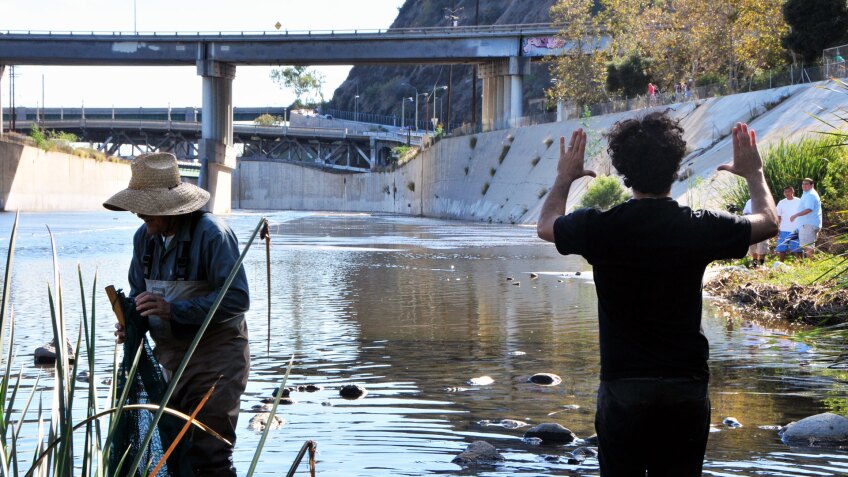Fishing at the River

Fishing with two marine biologists was an amazing experience. Even though they did most of the fishing, it was still interesting to learn about the different animals we caught, especially the crawfish, who I found to be disgusting but kinda cute. They taught us about the invasive and noninvasive species, their origins and the reason some fish were brought to the river. What i was most amazed about was the river's potential for recreation. One of the biologists said that a long time ago there'd been plans to build all sorts of rec. centers and parks all along the river and this really got me thinking about what that would mean to all of Los Angeles.
I understand that a change of that magnitude wouldn't come cheap but it'd certainly be a welcome change. Anyway, they told us that many of the fish that now lived in the river had swam upstream from other places and others were brought to the river so as if to exterminate the species that had invaded the area originally. Nothing a little fishing couldn't fix; however, there seems to be a lot of confusion about weather or not fishing is legal. I can only partially sympathize with illegal fishing because of the health concerns that come up, otherwise it doesn't make any sense, especially since people do it anyway and there's no one enforcing any laws against it. This goes back to what i said about the potential for recreation, fishing could become a big part of this community if we put some money into it. Find out how much mercury and toxins the fish have, clean the area up to allow for more breeding and hold annual competitions or events or...god knows what else.


The biologist really lamented the poor use of the river and I can't help but agree, now that they've showed us what it can become. In short, we need to figure out how to get this back under the eyes of City Hall and get the ball rolling.


